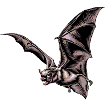Museum, University of Nebraska State

University of Nebraska State Museum: Mammalogy Papers
Document Type
Article
Date of this Version
5-10-2005
Citation
Mastozoología Neotropical (2005) 12(1): 37-52.
Mendoza, 2005.
Abstract
We examined 96 museum specimens belonging to 14 species of Carnivora from the Mexican State of Puebla. In addition, four species were documented based on literature records and by indirect evidence. The carnivorous mammals of Puebla belong to 5 families, 18 genera, 18 species and 23 subspecies. Eight of these 23 taxa are reported herein for the first time from the state of Puebla. Of the 18 species, Herpailurus yagouaroundi, Lontra longicaudis, Taxidea taxus, and Galictis vittata are considered by Norma Oficial Mexicana as threatened species, Leopardus wiedii and Eira barbara in danger of extinction, and Potos flavus is under special protection. We found Lynx rufus, Canis latrans, Taxidea taxus, and Bassariscus astutus were found only in the Nearctic region of the State, whereas Herpailurus yagouaroundi, Leopardus wiedii, Lontra longicaudis, Galictis vittata, Eira barbara, Potos flavus, and Nasua narica were found only in the Neotropical region of the State. The remaining seven species (Puma concolor, Urocyon cinereoargenteus, Mustela frenata, Mephitis macroura, Spilogale putorius, Conepatus leuconotus, and Procyon lotor) have been taken in both the Nearctic and Neotropical regions. Localities in the Sierra Norte de Puebla had the greatest species richness and abundance of individuals. The carnivores confront serious conservation problems in the state because they are hunted indiscriminately as trophies and by the local residents as harmful species. Moreover they are hunted for economic benefit by the sale of theirs skins or as living pets. The carnivores in some areas are used as food items and for therapeutic proprieties of their fat, skin, or bones. Unfortunately at this time we can’t assess the full impact of these activities on the local populations.


Comments
Copyright ©SAREM, 2005. Used by permission.